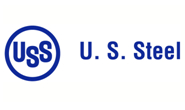Steel Mills

U.S. Steel Cancels Mon Valley Project in Surprise Move
Written by Sandy Williams
April 30, 2021
In a surprise announcement, U.S. Steel said it is canceling the endless casting and cogeneration project at Mon Valley Works. The company has already spent $170 million on the $1.3 billion project. “This is not the end of Mon Valley,” President and CEO David Burritt emphasized during the first quarter earnings call on Friday. The facility will continue to serve the appliance and construction markets. Equipment in storage will be evaluated for reallocation elsewhere.
“The events of the last year gave us the opportunity to reevaluate our capital allocation priorities,” said Burritt. “Based on today’s ‘Best of Both’ footprint and the global call to action of the emerging climate crisis, we know that this difficult decision is the right one for the business.”
During the earnings call, an analyst questioned why the project was canceled when it was previously touted as “game changing” for an 82-year-old hot mill that needed to be replaced.
“When we disclosed the project two years ago, we were taking a very good facility and increasing its capabilities,” said Kevin Lewis, Vice President of Investor Relations. “We remain very confident that the existing capabilities at Mon Valley will allow us to compete in the end markets that Mon Valley has always served and will serve at high levels of profitability going forward.” U.S. Steel considers Mon Valley its lowest-cost producer and one the most efficient and profitable within the flat-rolled segment. He added that as of Friday, Mon Valley began a 25-day maintenance outage for the blast furnace.
Another surprise announcement was the permanent closing of the 1, 2 and 3 coke lines at Clairton by 2023. The extended period will limit impact to the workforce and allow regular attrition to occur, said Burritt, as well as allowing U.S. Steel to continue to serve customers with third-party coke. The Mon Valley announcements were “informed by our expanded understanding of our steelmaking future, an accelerated approach to reducing our carbon and capital intensity,” said Burritt. The coke line closures are also part of an agreement with the Allegheny Health Department.
The Clairton Coke Works has been blamed for an increase in respiratory ailments following a fire on Dec. 24, 2018, that damaged the pollution control room. Sulfur dioxide emissions increased by more than 25 times the normal average over a period of 100 days until repairs were completed. U.S. Steel has invested more than $300 million on environmental improvements since that time and said it has recommitted to safety and environmental performance.
Two other facilities with idled blast furnaces will not see any change in status. The Granite City BF A will remain idled. Granite City typically serves the energy market which, while improving, is still at low levels with imports elevated.
The blast furnaces at Lake Erie works are expected to remain idled indefinitely. The finishing side remains operational and profitable in relation to HSS, the company said.
“Last quarter, you heard us reference optimism, optionality and opportunity for 2021,” said Burritt. “Well, those themes are confirmed in our first-quarter performance and our outlook for the rest of the year and beyond.” Burritt said he remains bullish on the steel market for a number of reasons, including “robust demand, long lead-times and insight from customers.” He added that a much-needed infrastructure bill would be a catalyst for additional earnings growth.
As a fully integrated steelmaker from iron ore through finished products, U.S. Steel claims advantages over its competitors. “Our low-cost fully integrated iron ore mines supply our blast furnaces with high-quality iron ore,” noted Burritt. “Today’s iron ore prices are near record highs, but U.S. Steel’s iron ore input cost is the lowest in North America, providing a structural cost advantage in our Flat-Rolled segment.” The company is optimizing its scrap sourcing by providing prime scrap generated internally to Big River Steel to offset their scrap needs. The savings have amounted to $5 million through April.
Big River Steel was U.S. Steel’s strongest performer in the quarter and is expected to continue to exceed expectations. The BRS Phase 2 expansion has led to world-class labor productivity, said Burritt. “With 651 employees capable of producing 3.3 million tons, that’s 5,000 tons of high-quality, low emission steel per employee.”
“At Big River Steel, it’s not just about how much steel you can make, it’s about how much money you can make per minute of line time,” said Burritt.
The ramp-up of the RH degasser is expected to enable the mill to make higher-end products. The introduction of verdeX sustainable steels at BRS is a game-changing product that offers customers proprietary grades of steel, including XGC grades of Gen3 advanced high-strength steels, with a 75% reduction in CO2 emissions, the company claims.
Decarbonization by 2050 is U.S. Steel’s lofty goal, one that will take a lot of work and capital to achieve, said Burritt. “Three categories will be impacted–how we make steel, who we partner with, and where we allocate capital.” It will take billions of dollars over the next 30 years across the steel industry as well as collaboration between countries, companies and competitors, he added.
“Net-zero carbon emissions is the Big Hairy Audacious Goal, or BHAG, of this generation. That is why we announced our ambitions to achieve carbon neutrality by 2050. We aspire to be part of this solution. Achieving this goal won’t be easy. It requires us to reimagine the way we work. How we make steel, how we amaze and delight our customers, and how we allocate capital. That means, we have to make hard decisions,” said Burritt.
By Sandy Williams, Sandy@SteelMarketUpdate.com

Sandy Williams
Read more from Sandy WilliamsLatest in Steel Mills

Mexico’s TYASA breaks ground on SBQ rolling mill
Mexican steelmaker Talleres y Aceros (TYASA) broke ground this month on the construction of a new special bar quality (SBQ) rolling mill in the state of Veracruz.

Goncalves sees more US trade actions ahead, says Nippon deal for USS has ‘zero chance’
Cleveland-Cliffs’ Lourenco Goncalves thinks trade measures announced by the US government on Tuesday against China were just the opening salvo in a series of trade actions. Case in point: The Biden administration targeted China’s “unfair” trade policies with additional tariffs on an array of Chinese-made goods - including steel, aluminum, and EVs.

Nucor holds weekly HRC price steady after last week’s cut
Nucor chose to hold its consumer spot price (CSP) for hot-rolled (HR) coil steady this week after stunning the market last week with a significant price decline. The steelmaker said in a letter to customers on Monday morning that its $760-per-short-ton (st) CSP base price for HR coil is effective immediately. The price is unchanged from the CSP announced on May 6 but down $65/st from $825/st April 29.

Nucor’s Jellison set to retire, Spicer tapped for EVP role
Nucor said EVP Douglas J. Jellison plans to retire on June 8 after more than 33 years with the company. Randy J. Spicer will be promoted to EVP effective May 12.

Republican Senators demand Biden block USS sale to Nippon
Three vocal Republican senators are demanding that President Joe Biden block the sale of U.S. Steel to Japan’s Nippon Steel.
